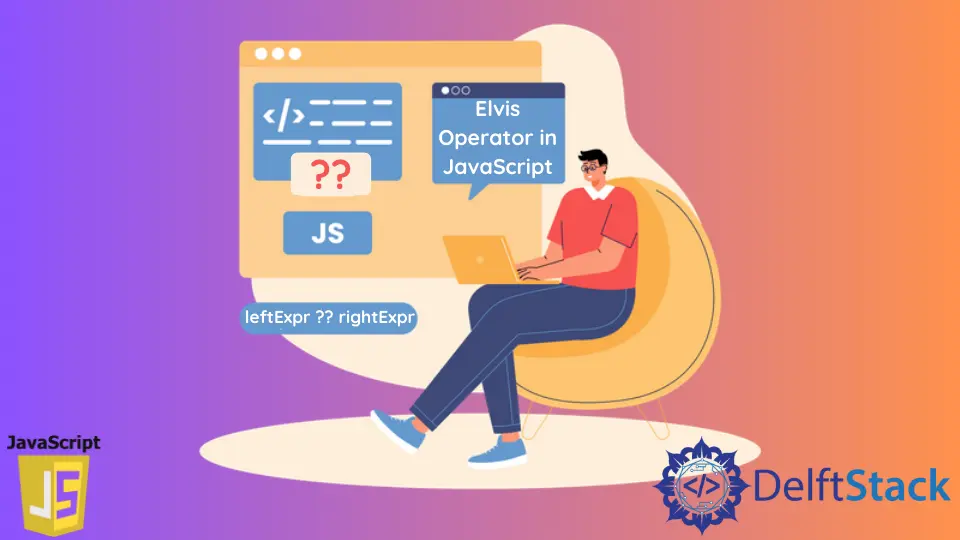The Elvis Operator in JavaScript

The Elvis Operator is a shorter version of the ternary operator. This operator is known as the nullish coalescing operator in JavaScript, and it is represented using the ?? symbol.
It returns a default value only when the expression value is null or undefined.
Implement nullish Coalescing Operator ?? in JavaScript
The nullish coalescing operator ?? was introduced in the ECMAScript 2020 version of the JavaScript programming language.
Syntax:
leftExpr ?? rightExpr
The ?? operator will only return the rightExpr (the expression that is present at the right of the ?? operator) only when the leftExpr (the expression that is present at the left of the ?? operator) is either null or undefined.
Code:
let myObj = {name: {firstname: 'Adam', lastname: 'Smith'}};
let val = myObj.name ?? 'Default Value';
console.log(val);
Here, we have created an object called myObj that contains a property called name containing an entire object as a value. Then we are using the ?? operator.
To the left of the ?? operator, we have the myObj.name expression, whereas to the right, we have the Default value expression. The right expression, i.e., the Default Value, will only be assigned to the val variable if the myObj.name is either null or undefined.
The myObj.name expression contains some value, and it’s not null or undefined. Therefore, the myObj.name value will be stored inside the val variable, and after you print the val variable, the output you get is as follows.
Output:

The nullish coalescing operator ?? can be used inside a single statement with any number expression like in the example below.
Code:
let val = myObj.name ?? myObj.email ?? 'something null or undefined';
console.log(val)
In this example, if both myobj.name and myObj.email are either null or undefined, then only the ?? operator will return the string, or it will return the value of any one of the first expression which is not null or undefined.
So, here, only the myObj.email expression is undefined and not myObj.name, therefore, the value of the expression myObj.name will be returned and stored inside the val variable.
The val variable will now contain the object which the name property was storing, and this object will be printed on the console.
Output:

The operator ?? is not supported on IE and Opera browsers. For more details related to browser compatibility, you can read the MDN documentation.
Before the ?? operator was introduced inside the JavaScript programming language, a common approach was using the logical OR operator (||) to assign a variable’s default value. But this approach of assigning a default value creates various issues.
Code:
let val_1 = undefined || 'Hello!';
let val_2 = false || 'Hello!';
let val_3 = '' || 'Hello!';
console.log(val_1, val_2, val_3);
Output:
Hello! Hello! Hello!
The || being a Boolean logical operator, this operator may cause unexpected behavior if you consider 0, '', or NaN as valid values as shown above.
Changing the same example by replacing the OR operator with the nullish coalescing operator ?? will yield different results.
Code:
let val_1 = undefined ?? 'Hello!';
let val_2 = false ?? 'Hello!';
let val_3 = '' ?? 'Hello!';
console.log(val_1, val_2, val_3);
Output:
Hello! false
As you can see, this operator produces proper output. This is why the nullish coalescing operator ?? was introduced in JavaScript.
Sahil is a full-stack developer who loves to build software. He likes to share his knowledge by writing technical articles and helping clients by working with them as freelance software engineer and technical writer on Upwork.
LinkedIn